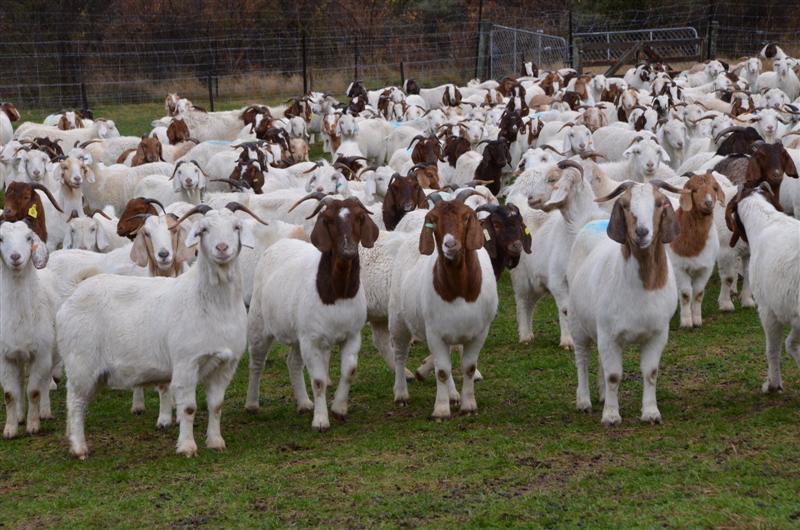- Pick which breed(s) you want. Decide if you want to do Meat goats, Milk goats, Fiber goats or maybe variety of each.
-
Get a good goat book. Something that will teach you all the basics of goat care such as how to perform a health check, goat diseases, Breeds of each variety of goat, recommended space per each animal and probably some handy first aid notes. Most consider this a invaluable reference, Even something to look back to in the future.
-
Buy some supplies. Shop around for food and water buckets, compare grains if you will be feeding your goats. Pick out a good balanced mineral to be fed free choice to provide what your goats may be lacking. Goats will get hurt minor or major and will need medical attention, so make your own Goat first aid kit, your vet can help you with recommendations for what to stock it with.
-
Build a pasture. Buy fencing supplies online or at your local farm store. Get help from someone who has built a pasture before. Goats will climb and rub on even the toughest fences if not prevented. They may also try to squeeze through even the tiniest spaces even if you don’t think they can. Make sure to build a separate, strong buck pen in which the fences must be very strong, sturdy and very high. Keep in mind this fence will keep your bucks in rut from your does in Estrus (heat).
-
Build shelter. Your goats will need a place to go in the winter and when it’s raining. A small pole barn will work just fine. Make sure that the door is facing south – away from the weather. Goats can withstand the cold to some degree but not cold rain or snow, Having a draft free building will help them keep warm enormously. Make sure your buildings are compatible for renovation in future additions to your herd. Even if you don’t think you will need the room, all too often you do and don’t have the resources to do so with your current building.
-
Buy a couple Does and a buck. Get another goat owner’s help here. Make sure to buy good quality goats, and not something someone is just trying to get off their hands. Your goat book will be helpful here, Tell the seller what your looking for, Honest breeders and owners will let you know if the goat is not from you. Be discerning.
-
Breed your Does! Watch your Does carefully. When they go into heat, put them in with the buck for a couple days, or until you think they have taken. The longer they have been with the buck, the larger range the expected due date will be, Naturally this is important to some and not to others. A normal gestation period is 145 to 155 days, 150 being average. Remember, bred and milking does need some extra care then a open doe or a buck.
-
Choose where to sell your product. whether for meat, fiber, milk and cheese and even Goat kids (baby goats), There are websites online devoted to goat sales, or you could go personal. You choose. Whichever way, make sure you have someone who will buy.
-
Sell your product. Research what others are selling for in your area. You don’t want to charge so much that you won’t get business or so low that you loose money
-
Build up your farm. As you get more customers, your demand will grow. Enlarge your pastures and buildings to accommodate the new additions and breed more goats.



